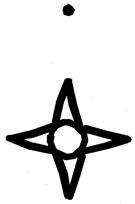Anthropology, Department of

Nebraska Anthropologist
Date of this Version
2007
Document Type
Article
Abstract
J.D. Fage (1969) and Patrick Manning (1981; 1990) examine demographic data from historical records, in the West African political and economic context, in order to formulate theories of the impact of the Atlantic slave trade on West African populations and social structure. However, Fage and Manning come to markedly different conclusions. Fage maintains that the intensification of polygyny in West Africa that accompanied the Atlantic slave trade preserved African populations. In contrast, Manning argues that intensified polygynous marriages on the West African coast decreased the fertility of female slaves, thereby depressing population growth and affecting traditional social structures. Manning later recants this assertion due to a dearth of evidence, yet I argue that recent studies on the negative effects of polygyny on female reproductive success can inform and support Manning's demographic model.


Comments
Published in Nebraska Anthropologist Vol. 22 (2007). Copyright © Katherine Lamie; published by The University of Nebraska-Lincoln AnthroGroup.